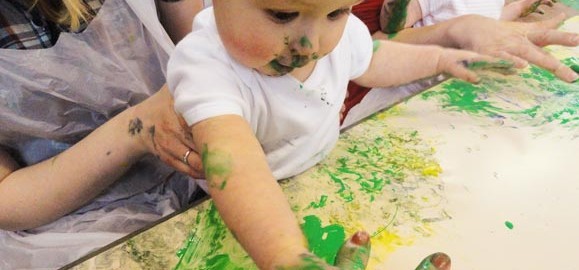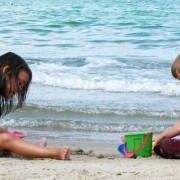8 Ways to Enjoy Messy Play at Home
How many of you breath a sigh of relief, when the Playgroup or Kindergarten your child attends does Messy Play – I mean it gets you off the hook right? No paint at home, no playdough on the carpet, no glue stuck to the table – phew!
Have you ever asked yourself, why the Playgroup teacher/ co-ordinator seems to be so keen on providing messy play for the children?
Educators know that children learn through all their senses, of touch, taste, smell, sound, and sight. We aim to provide activities which stimulate the senses – know as Sensory Play. Messy play is one type of sensory play.
It is particularly important for young children’s development, as it allows them to explore a variety of mediums; to develop their tactile skills; and in some cases also their fine motor muscles. It also allows an opportunity for language development (words such as rough, smooth, crunchy, cold, slimy etc) and for the child to expand their thinking skills.
Sensory activities facilitate exploration, and encourage children to learn while they play, create, investigate and explore the materials provided.
Here are some easy Messy Play activities to do at home to assist your child to grow and learn even more:
- Spray unscented shaving cream on a smooth surface and smear it around;
- Pour birdseed or rice bubbles into a shallow tray, and provide small plastic cups and scoops to pour with, and toy cars to ‘hide’ in it;
- Bubble-mix – use a ‘wand’ to form large bubbles as well as straws to blow with – ensuring that they blow, not suck;
- Water play – use a trough, an old baby bath or round dishes. Give a variety of plastic cups to pour with, and also sponges to squeeze, and paintbrushes to water paint with. On warm days, turn the hose on low, and let them water the garden – which often ends up with them watering themselves, the dog and anyone else around!
- Goop, made by mixing cornflour and water – this is fascinating, as it becomes both a liquid, and a solid.
- Playdough – provide cookie cutters, plastic knives and toothpicks to utilise. You can make the playdough even more interesting, by adding glitter, or essentil oils (ensuring they are non-toxic), so that as they roll it, a scent is released. You can also add birdseed, so that as they cut it, it ‘crunches’;
- Sandpit play – give them buckets and shovels, scoops and funnels. Also let them have water to experiment with; and
- Slime – dissolve soap flakes into very hot water, bit by bit, till you have the consistency you want, and add a few drops of food colouring.
To minimise your stress (not the child’s, because they will love these activities!) around this, follow these tips:
- Set up outside on the grass, or on a verandah. If necessary, put a plastic tarp down, or use an old shower curtain.
- Have paint smocks or old T-shirts for them (and maybe for yourself!)
- Have a plastic child’s table or a plastic sheet on a regular table
- Keep wipes, or a dish with water close by – this will seem like another new activity for the child to play with!
- Have a camera close by, to capture the delight and smiles which you will see in your child!
- And, tidying up can be a learning opportunity too!
Join in the play yourself – you’ll be surprised at how much fun you can have, and your child will just love your company!
Remember that being a parent allows you to revisit childhood fun again!
Happy Parenting!
—
Image by Veerle De Troyer via Flickr




